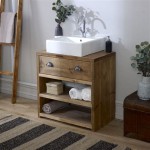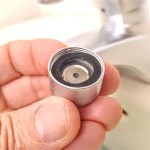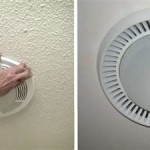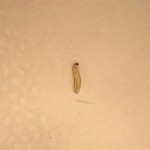How to Get Black Mould Off Your Bathroom Ceiling
Black mould, scientifically known as *Stachybotrys chartarum*, is a common problem in bathrooms due to the consistently high humidity levels. The bathroom ceiling, often overlooked during regular cleaning, provides an ideal environment for mould growth. Addressing this issue promptly is crucial, not only for aesthetic reasons but also for health considerations. Prolonged exposure to black mould can lead to respiratory problems, allergic reactions, and other health complications. This article provides a comprehensive guide on safely and effectively removing black mould from your bathroom ceiling.
Understanding the Problem: Why Mould Grows in Bathrooms
Mould thrives in damp, poorly ventilated environments. Bathrooms, by their very nature, are susceptible to mould growth. Showers and baths generate steam, increasing the humidity levels significantly. If ventilation is inadequate, this moisture remains trapped, creating a breeding ground for mould spores. Even small leaks in plumbing or roofing can contribute to the problem. Another factor is the accumulation of organic matter, such as soap scum and dead skin cells, which provides a food source for mould. Understanding these contributing factors is essential for preventing future mould growth after the initial cleaning.
Condensation is a major contributor. Warm, moist air comes into contact with the cooler surface of the ceiling, causing water to condense. This constant moisture allows mould spores, which are naturally present in the air, to germinate and spread. Areas that are poorly ventilated, such as corners and spaces behind fixtures, are particularly vulnerable.
The composition of bathroom paint can also play a role. Standard paint often contains organic components that mould can feed on. Specialised mould-resistant paints are available that incorporate biocides to inhibit mould growth. While these paints don't guarantee complete protection, they can significantly reduce the likelihood of mould returning.
Safety Precautions: Protecting Yourself During Mould Removal
Before commencing any mould removal process, it is paramount to prioritize personal safety. Black mould can release spores into the air, which can be harmful if inhaled or come into contact with skin. The following safety precautions should be strictly observed:
Ventilation: Ensure the bathroom is adequately ventilated. Open windows and doors, and use an exhaust fan to help remove airborne spores during the cleaning process. If the bathroom lacks a window or exhaust fan, consider using a portable air purifier with a HEPA filter to capture mould spores.
Personal Protective Equipment (PPE): Wear appropriate PPE to protect yourself from exposure to mould spores and cleaning chemicals. This should include:
- Respirator: An N-95 respirator or a half-face respirator with a P100 filter will effectively filter out mould spores. A simple dust mask is insufficient.
- Gloves: Wear non-porous gloves, such as rubber or nitrile gloves, to protect your hands from contact with mould and cleaning solutions.
- Eye Protection: Wear goggles or a face shield to prevent mould spores and cleaning solutions from entering your eyes.
- Protective Clothing: Wear old clothes that cover your arms and legs, or disposable overalls, to prevent mould spores from contaminating your clothing.
Protecting the Surrounding Area: Cover nearby surfaces with plastic sheeting to prevent the spread of mould spores during cleaning. Seal the edges of the plastic sheeting with painter's tape to create a barrier.
Children and Pets: Keep children and pets out of the bathroom during the mould removal process. They are more susceptible to the harmful effects of mould exposure.
Effective Cleaning Methods: Removing Black Mould From the Ceiling
Several cleaning solutions can effectively remove black mould from a bathroom ceiling. The choice of solution will depend on the severity of the mould growth and personal preference. It is always recommended to test any cleaning solution in an inconspicuous area first to ensure it does not damage the ceiling surface.
Bleach Solution: A solution of bleach and water is a common and effective method for killing mould. Combine one part bleach with ten parts water. Apply the solution to the mouldy area using a sponge, cloth, or spray bottle. Allow the solution to sit for 10-15 minutes, then scrub the area gently with a soft brush or sponge. Rinse thoroughly with clean water and dry the area completely. It is important to note that bleach can discolour painted surfaces, so this method may not be suitable for all ceilings. Bleach is also more effective at removing the stain left by mould, rather than killing the mould itself. Always ensure adequate ventilation when using bleach.
Vinegar Solution: White vinegar is a natural and less harsh alternative to bleach. It is also effective at killing mould spores. Pour undiluted white vinegar into a spray bottle and apply it to the mouldy area. Let it sit for at least one hour, then scrub the area with a brush or sponge. Rinse with clean water and dry thoroughly. The vinegar smell will dissipate over time.
Baking Soda Solution: Baking soda is another natural cleaning agent that is effective against mould. Mix baking soda with water to create a paste. Apply the paste to the mouldy area and let it dry. Once dry, scrub the area with a brush or sponge and rinse with clean water. Baking soda is also a natural deodorizer, which can help to eliminate any lingering mouldy odours.
Hydrogen Peroxide: Hydrogen peroxide (3%) is an effective mould killer and disinfectant. Pour it into a spray bottle and saturate the mouldy area. Let it sit for 10-15 minutes, then scrub the area and wipe clean. Hydrogen peroxide is less harsh than bleach and is generally safe to use on most surfaces.
Tea Tree Oil: Tea tree oil is a natural fungicide. Mix 1 teaspoon of tea tree oil with 1 cup of water in a spray bottle. Spray the solution onto the mouldy area and let it sit for at least an hour, or preferably overnight. Wipe the area clean with a damp cloth. Do not rinse. The strong scent of tea tree oil will fade over time. This solution is particularly effective in preventing mould regrowth.
Application and Scrubbing: Regardless of the cleaning solution used, the application and scrubbing process is crucial. Apply the solution generously to ensure it penetrates the mould. Use a soft brush or sponge to scrub the area gently. Avoid using abrasive scrubbers, as they can damage the ceiling surface. For stubborn mould stains, repeat the application and scrubbing process as necessary.
Preventing Future Mould Growth: Maintaining a Mould-Free Bathroom
Preventing mould from returning is as important as removing it in the first place. Implementing the following measures can significantly reduce the likelihood of future mould growth:
Improve Ventilation: Ensure the bathroom is adequately ventilated. Use the exhaust fan during and after showers and baths. If the bathroom lacks an exhaust fan, consider installing one. Opening windows and doors can also help to improve ventilation.
Reduce Humidity: Take steps to reduce humidity levels in the bathroom. Wipe down wet surfaces after showering or bathing. Repair any leaks in plumbing or roofing promptly. Consider using a dehumidifier to remove excess moisture from the air.
Regular Cleaning: Clean the bathroom regularly to remove soap scum, dead skin cells, and other organic matter that mould can feed on. Pay particular attention to areas that are prone to moisture accumulation, such as the ceiling, corners, and around fixtures.
Mould-Resistant Paint: When repainting the bathroom ceiling, use a mould-resistant paint. These paints contain biocides that inhibit mould growth. Ensure the ceiling is completely dry before painting.
Proper Insulation: Ensure the bathroom is properly insulated to prevent condensation. Insulating exterior walls and ceilings can help to maintain a more consistent temperature and reduce the likelihood of condensation forming on cold surfaces.
Inspect Regularly: Regularly inspect the bathroom for signs of mould growth. Address any issues promptly to prevent them from escalating.
By understanding the causes of bathroom mould, taking appropriate safety precautions, using effective cleaning methods, and implementing preventative measures, one can effectively remove black mould from the bathroom ceiling and maintain a mould-free environment.

Ceiling Mold Growth Learn The Cause And How To Prevent It Environix

My Bathroom Ceiling Has Black Mould Growing On It What Should I Do

Black Mould Removal The Right Way

Mold On Bathroom Ceiling How To Clean Off

Bathroom Ceiling Mold Removal When To Clean Call Branch Environmental

How To Remove Black Mold From A Bathroom Ceiling

Ceiling Mold Growth Learn The Cause And How To Prevent It Environix

Mold On Bathroom Ceiling How To Clean Off

Why Is There Black Mold On My Bathroom Ceiling Medics

Black Mold On Your Bathroom Ceiling Read This First
Related Posts







